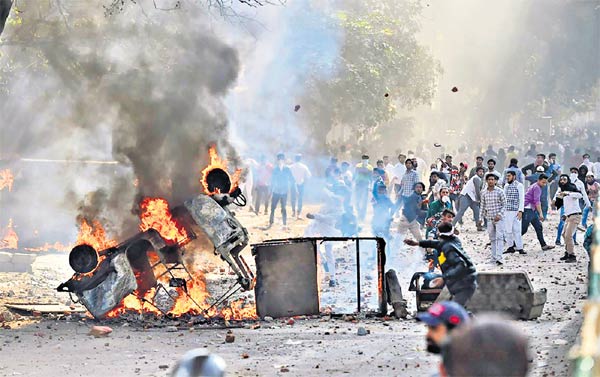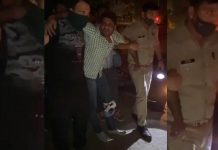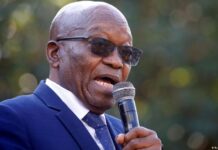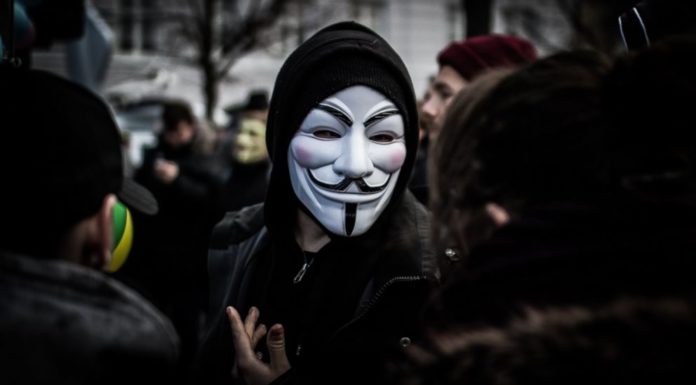Ten people have been killed in Delhi amid clashes over a controversial new Indian citizenship law during US President Donald Trump’s first official visit to the country.
This is the deadliest violence the Indian capital has seen in decades.
The clashes first broke out on Sunday, ostensibly between protesters in favour of the law and those against it.
But they have since taken on religious overtones, with Hindu and Muslim mobs clashing violently.
The clashes are happening in Muslim-majority neighbourhoods in north-east Delhi – about 18 km (11 miles) from the heart of the capital, where Mr Trump has been holding meetings with Indian leaders, diplomats and businessmen.
The Citizenship Amendment Act (CAA) – which critics say is anti-Muslim – has sparked massive protests since it was passed last year, and some of those have turned violent. But the demonstrations in Delhi have been peaceful until now.
When asked about the violence during a press briefing, Mr Trump evaded the issue, saying that although he had “heard about it,” the incident was “up to India” to handle.
However, he said he had brought up the issue of religious freedom in the country and was impressed by the government’s response.
Correspondents say the current unrest is an embarrassment to Prime Minister Narendra Modi as it has taken the spotlight away from Mr Trump’s visit.
Further clashes are feared, say BBC reporters in the area. They saw mobs are throwing stones and shouting slogans, with some in the crowd shouting, “shoot the traitors”.
“We have seen a tyre market that’s been set on fire, plumes of smoke are coming up. Journalists, including us, are being heckled and warned against filming,” our correspondent, Yogita Limaye, says.
Where is the violence?
It broke out in three Muslim-majority areas in north-east Delhi on Sunday and has continued since.
Protesters are firmly split along religious lines, BBC reporters at the scene say, and both sides blame each other for starting the clashes.
But the violence has been linked to a BJP leader, Kapil Mishra, who had threatened a group of protesters staging a sit-in against the CAA over the weekend, telling them that they would be forcibly evicted once Mr Trump left India.
The clashes spilled into Monday and police fired tear gas shells and led baton charges to disperse the stone-throwing crowds. TV footage showed flames and smoke billowing from buildings.
Prohibitory orders – which limit the gathering of four or more people – have been imposed in the area.
Eyewitnesses said they saw charred vehicles and streets full of stones in areas like Jaffrabad and Chand Bagh on Tuesday morning. Police were allowing people to enter only after checking their identity cards.
Some metro stations have also been shut.
Who are the dead and injured?
Nine civilians and one policeman, a constable named Ratan Lal, have been killed so far, according to Sunil Kumar Gautam, the medical director of GTB hospital where most of the injured have been taken.
Mr Gautam also told BBC Hindi that the toll is likely to rise.
Two journalists belonging to the NDTV news channel were badly beaten while they were out reporting on Tuesday morning.
Another reporter from a local channel called JK24x7 was also injured after he was shot at.
Shahid Alvi, an auto rickshaw driver, died because of a bullet injury he suffered during the protest. His brother, Rashid, told BBC Hindi that Shahid was married just a month ago.
“He was shot in the stomach and died while we were taking him to the hospital,” he said.
Another victim has been identified as Rahul Solanki.
His brother, Rohit, told BBC Hindi that he died after being shot as he tried to escape from a mob.
“He had gone out to buy groceries when he was suddenly surrounded. He was shot at point blank range. We tried taking him to four hospitals but we were turned away,” he said.
What are officials doing?
Delhi’s newly re-elected chief minister, Arvind Kejriwal, called on the federal government to restore law and order.
“There are not enough police on the streets [in the affected areas]. Local police are saying they are not getting orders from above to control the situation, and they are not able to take action,” he told reporters.
The capital’s police force reports directly to Mr Modi’s ruling Bharatiya Janata Party (BJP)-led government.
Home Minister Amit Shah, who is in-charge of Delhi’s police forces, is holding a meeting with Mr Kejriwal to discuss the situation.
What is the citizenship act about?
The Citizenship Amendment Act (CAA) grants amnesty to non-Muslim immigrants from three nearby Muslim-majority countries – Afghanistan, Pakistan and Bangladesh.
It has raised fears that India’s secular status is at risk, and critics say it discriminates against Muslims.
Mr Modi’s government denies this, and has said it only seeks to give amnesty to persecuted minorities.
But protests against the law drew hundreds of thousands of people across India, both Muslim and Hindu. Some of the most high-profile protest, such as a ongoing sit-in demonstration in Delhi’s Shaheen Bagh area, have been led by Muslims.













![Hotstar Premium Cookies 2019 [*100% Working & Daily Updated*] Hotstar Premium Cookies 2019 [*100% Working & Daily Updated*]](https://tahav.com/wp-content/uploads/2019/11/Hotstar-Premium-Cookies-Free-100x70.jpg)



